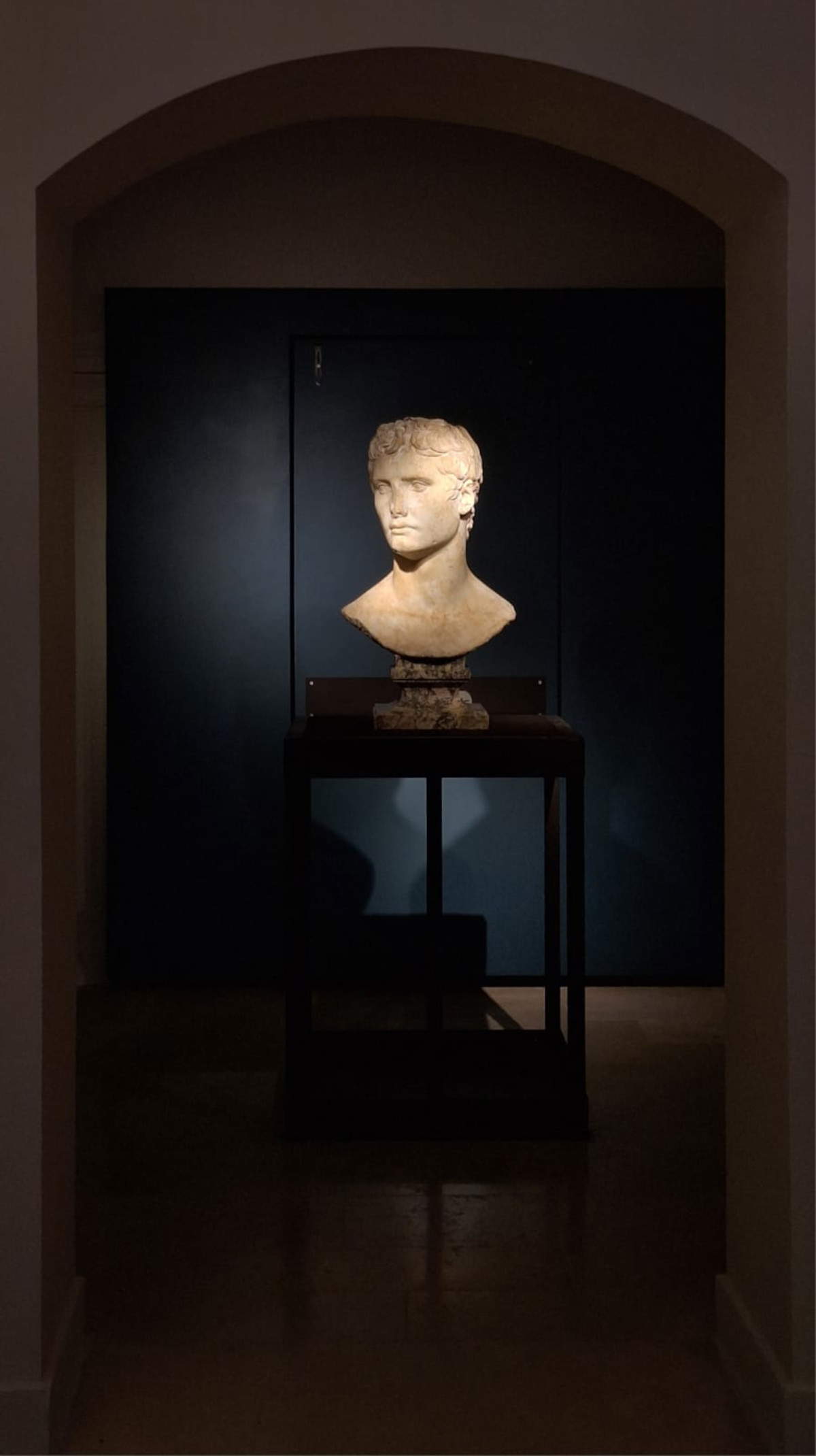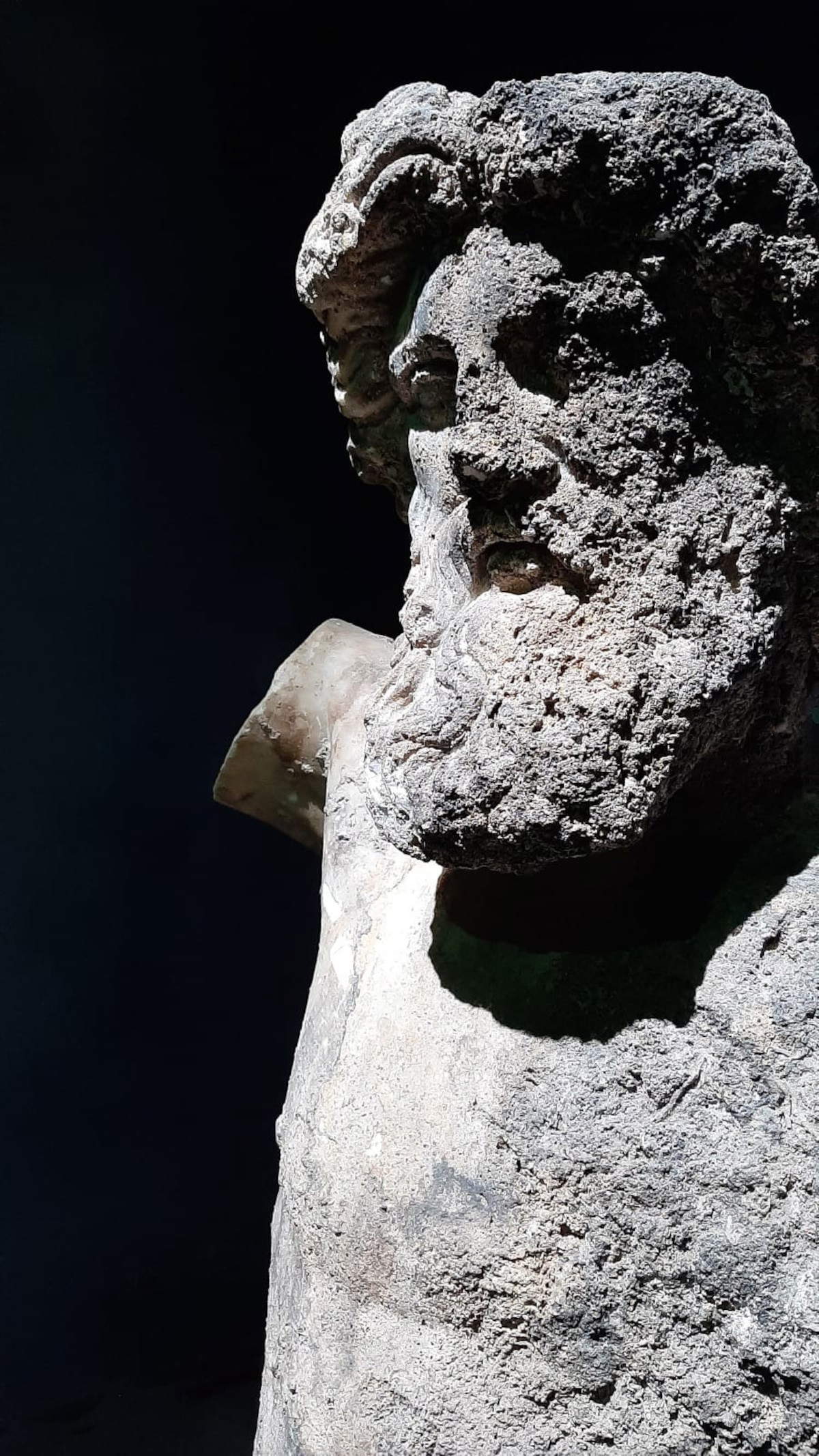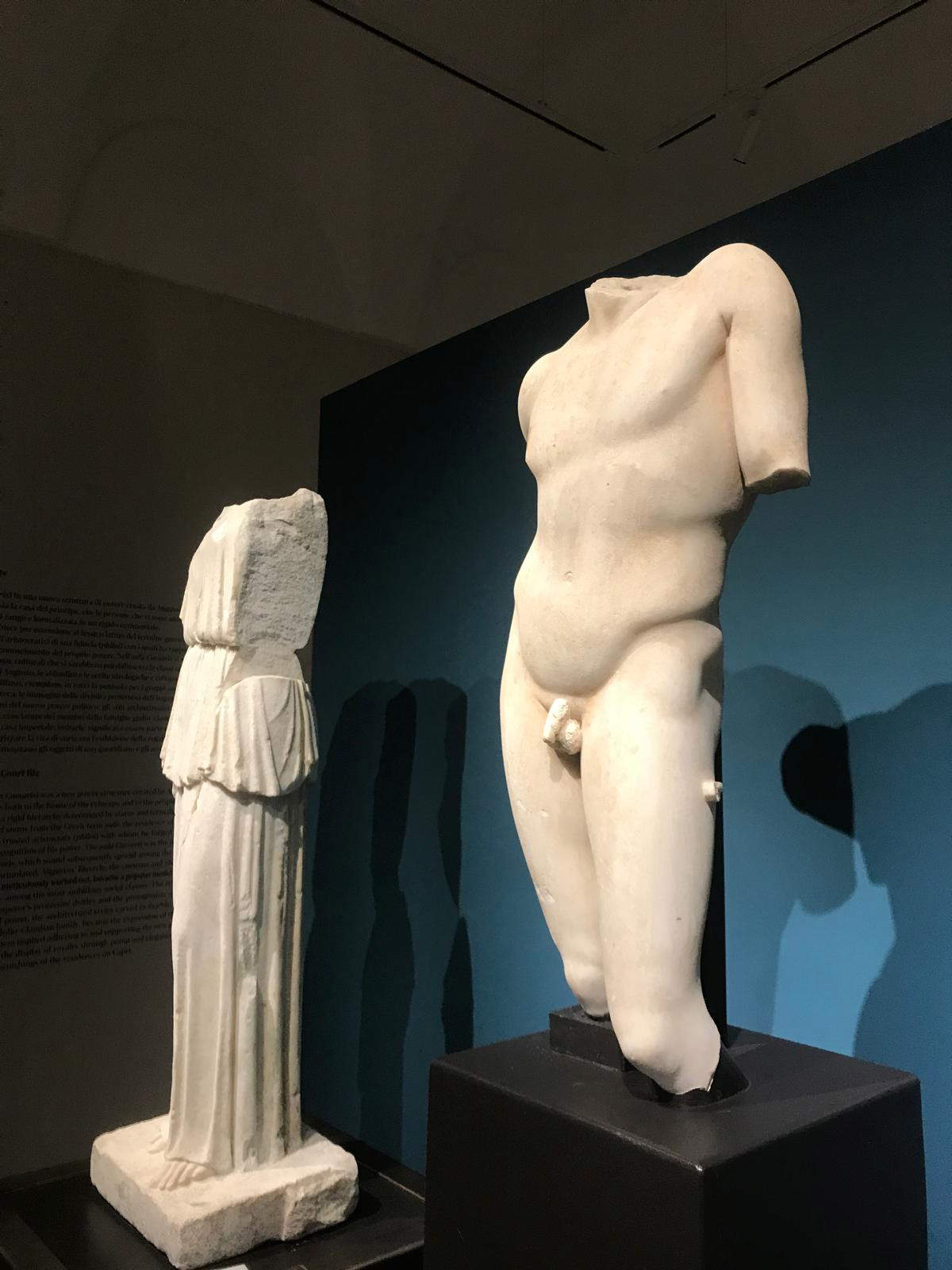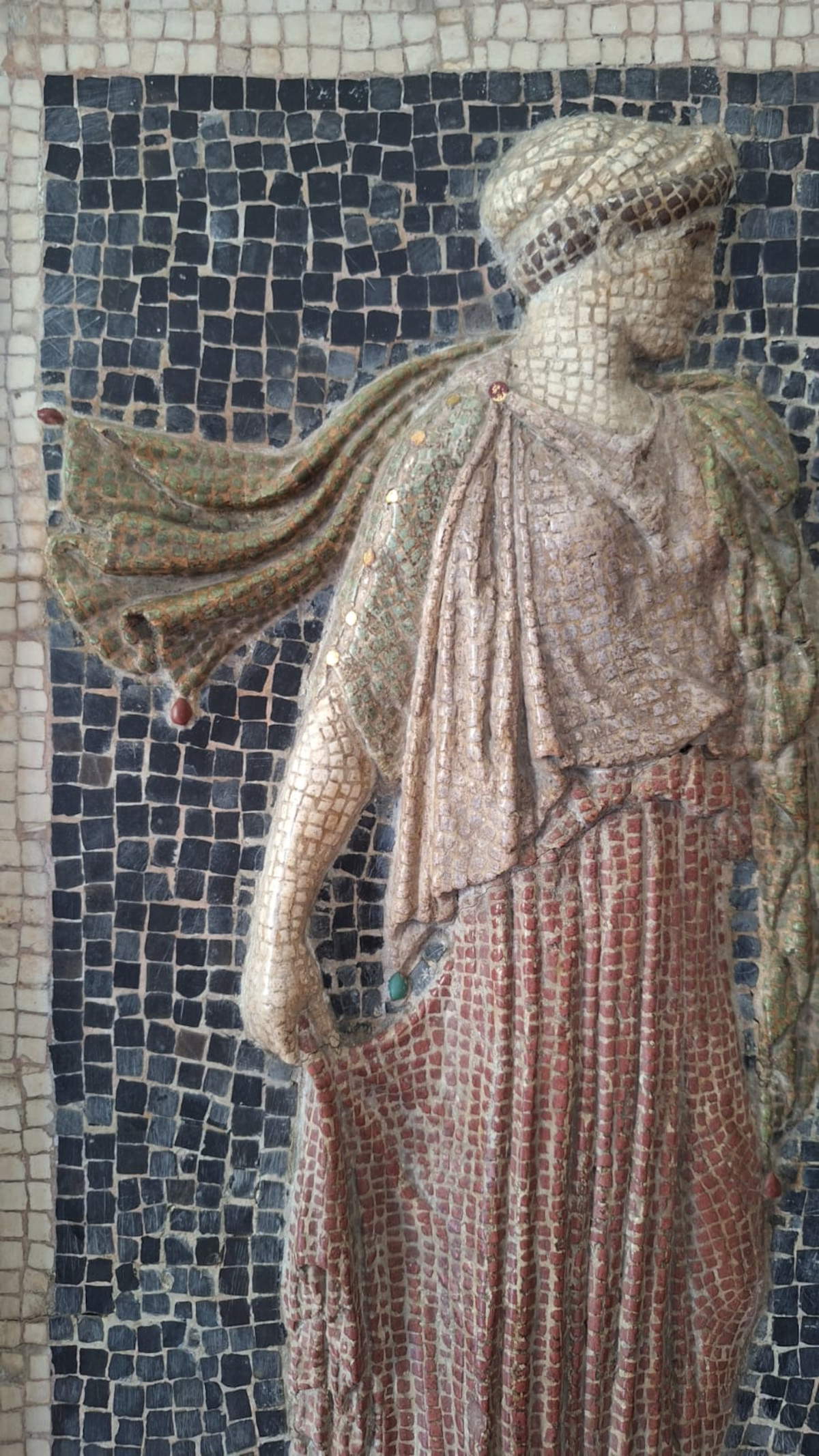Capri, new archaeological museum opened. It tells the story of the island at the time of emperors Augustus and Tiberius
On Capri, in the spaces of the Quarto del Priore in the Charterhouse of St. James, the new Archaeological Museum of Capri was inaugurated with the new exhibit The Island of the Caesars. Capri from Augustus to Tiberius. The inauguration was attended by Culture Minister Gennaro Sangiuliano, Museums General Director Massimo Osanna, who is also curator of the project together with Carmela Capaldi of the University of Naples Federico II, and Campania Regional Museums Directorate delegate Luana Toniolo, RUP of the intervention.
The museum tells the story of the island’s history during its heyday, at the time of emperors Augustus and Tiberius, through an eight-room itinerary. This exhibition features 120 objects and works of art, including valuable marble sculptures, frescoes, ceramic and silver pottery, and architectural elements. At the heart of the exhibition are the artifacts found on the island, previously stored in the storage rooms of the Carthusian Monastery itself and the National Archaeological Museum in Naples, now brought together and made accessible to the public. The museum narrative is enriched by numerous objects from the same period, mainly from the Campania area and kept in the deposits of the Archaeological Park of the Phlegraean Fields, the Archaeological Park of Paestum and Velia, and the Archaeological Park of Ostia Antica, as well as from recent seizures conducted by the Carabinieri Cultural Heritage Protection Command. These include three silver cups returned from the United States and a fresco from the Vesuvian area depicting a temple.
To ensure accessibility, multimedia supports have been designed, including a touchscreen that allows visitors to explore the twelve imperial villas recorded in ancient sources, offering information on their history and excavation. The layout is designed to highlight the continuous relationship with the sea, visible from every room in the museum and integrated into the presentation of the exhibits. The color palette of the exhibit is inspired by a painting by Karl Wilhelm Diefenbach displayed in the first room, which depicts the Siren’s Rock and reflects the sea in a constant dialogue between the interior of the museum and the nature outside. In addition, spaces dedicated to the emperor’s otium open onto the gardens of the Prior’s Quarto, further integrating natural elements and imperial residences, such as horti and viridaria, into the museum.
The museum tour
The museum tour begins with an initial room dedicated to the wild nature of Capri, evoked by a majestic and solemn painting by Karl Wilhelm Diefenbach. The projection on the vault recalls nature today, linking the island’s past with its present. This introductory space is meant to highlight the unique spirit of Capri, a place suspended between sea and sky that has been a haunt of intellectuals, fugitives and utopians in the recent past.
The second room is dedicated to the Battle of Actium, a crucial event following which Augustus founded a new political system in 31 BC. Testimonies such as Strabo’s indicate that Augustus initiated intense building activity on the island, suggesting that even then Capri was home to several imperial residences adorned with rare objects and antiquities. These could include the twelve villas of Tiberius mentioned by Tacitus, with the villas in the Palazzo a Mare-Bagni di Tiberio and Damecuta locations certainly dating from the Augustan age.
The third room shows the opulence and refinement of imperial residences through everyday objects and furnishings from the villas on Capri. In the fourth room, a banquet offered by Augustus on the island is the protagonist. Augustus loved Capri for the beauty of the landscape, the gentle climate, and the serene atmosphere conducive to meditation. The island, with its aura of sacredness and Greek tradition, attracted the emperor, who spent the last days of his life there. The fifth room is devoted to the domus Augusta. In this section, family ties and the management of Augustus’ personal wealth are intertwined with the operation of the institutional machinery and the management of state property. A gallery of portraits and a large family tree illustrate the complex family ties of the Julio-Claudian dynasty.
The sixth room recounts villa living, with open spaces between the sea and gardens where the master of the house could surround himself with works of art and reproduce in architecture and furnishings the luxury of eastern princely residences. The seventh room is dedicated to Tiberius’ island, a refuge for philosophers, mathematicians, and astrologers. Despite the hostile tradition handed down by historians such as Tacitus, Suetonius, and Cassius Dione, Tiberius was a cultured and refined man, a lover of works of art and surrounded by scientists and scholars.
The tour concludes with the Blue Grotto, an extraordinary natural treasure chest transformed in Tiberian times into an evocative nymphaeum. Here, among the regularized rocky shores, a marble group of Neptune and Tritons emerged, recreated in its entirety along with a statue of a peplum-clad maiden. The cave setting, with light effects and a refined sound commentary, leads the visitor inside the cave itself, offering an immersive experience that evokes bathing in the sacred waters of the past.
"The new museum exhibit The Island of the Caesars. Capri from Augustus to Tiberius ideally opens a new season for cultural institutions in the pearl of the Mediterranean. The new archaeological museum at the Charterhouse of St. James, which tells the story of the island at the time of its apogee with 120 artifacts found in various excavations and until now preserved in numerous deposits in the Campania region, will in fact go on to embellish, together with Villa Jovis, the new Museums and Archaeological Parks of Capri institute, which I strongly desired among the new 17 autonomous museums. This is a decisive push to offer visitors a cultural offer worthy of the excellence of Capri’s globally recognized tourist offer," said Culture Minister Gennaro Sangiuliano.
“Capri is the protagonist of a wide-ranging program of cultural heritage enhancement, which the Ministry has undertaken with the establishment of the autonomous museum, the ongoing refurbishment of the Diefenbach collection, and the opening today of an archaeological museum entirely devoted to theisland in the Julio-Claudian era, a pivotal moment when Augustus acquired Capri as imperial property and his successor Tiberius settled there, bringing his administration and court there,” said Museums Director General Massimo Osanna. “Because of this central role it played in Roman times, the island was waiting for and deserved this museum, which rightfully belongs to the National Museum System, and which was made possible by the active collaboration not only of all the ministerial institutions involved, but also of the administrations of Capri and Anacapri. In addition to the artifacts found in the island territory, other objects, useful to complete the museum narrative, until now kept in the deposits of other museums or coming from recoveries conducted by the Carabinieri, are also returned to public enjoyment: they are historical-archaeological evidence of those decades that brought Capri to the center of the Roman Empire.”






 |
| Capri, new archaeological museum opened. It tells the story of the island at the time of emperors Augustus and Tiberius |
Warning: the translation into English of the original Italian article was created using automatic tools. We undertake to review all articles, but we do not guarantee the total absence of inaccuracies in the translation due to the program. You can find the original by clicking on the ITA button. If you find any mistake,please contact us.




























